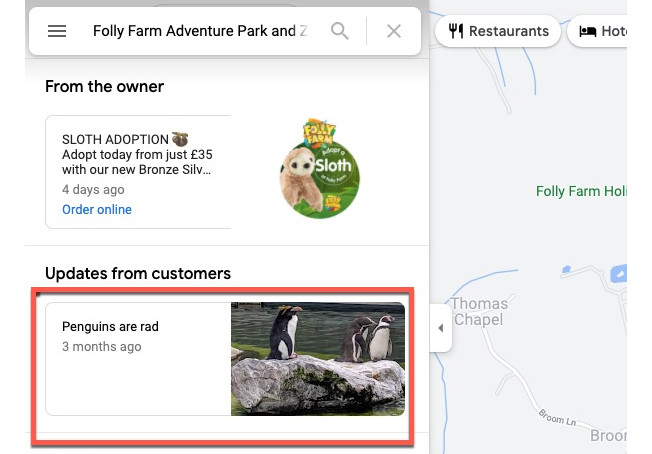In the world of local search, some updates are more significant than others. This month, we saw Google tinker with some settings, retire some features, and threaten some serious consequences with its latest algorithm update. Let’s get to the details.
Google’s new Pirate algorithm update obliterates traffic for offending sites
In early February, Google launched its newest algorithm update, Pirate, and it’s already showing signs of success. A Google filing with the US Copyright Office revealed that the search giant’s newest algorithm update reduces search volume by an average of 89% for websites assigned a “demotion signal”. It’s all part of Google’s efforts to divert traffic away from sites that receive a large number of valid removal notices through the Digital Millennium Copyright Act.
This is significant because we’re seeing exactly how much an algorithm update can impact a business’s rankings. Automatic demotion signals are intended to target obviously illicit activities that most businesses would not engage in, but remember that we have seen other updates (like Medic) that have been less clear about who they target. So, although an 89% drop in traffic to an illegal website is an obvious win, a similar reduction for a legitimate-but-inadvertently-targeted business may well destroy livelihoods.

The potential consequences of these processes are frightening—especially considering the lack of manual oversight—so it’s important to not only walk in lock-step with Google’s terms of service but keep up with all algorithm changes. Only a handful of Google’s many updates are publicly announced each year, named algorithm updates occurring each year, but local SEO experts can monitor algorithm changes using large sample sizes. Unless you want to risk an 89% loss in traffic, never take Google’s updates for granted (and don’t rely on the Copyright Office to inadvertently reveal how Google’s algorithm updates work!).
Google Maps reveals review spam policy enforcement
Google has published an overview of how reviews work on Google Maps. It details how the company develops and enforces policies, as well as which processes are automated and which are powered by manual content moderation.
During the onset of the pandemic, we saw how Google had to intervene to alter its review policies. Due to mass negative review campaigns based on vaccination requirements, Google stated that:
We put extra protections in place to remove Google reviews that criticise a business for its health and safety policies or for complying with a vaccine mandate.
In other words, Google utilises both machines and people to moderate their review platform when any factors outside of the business’s own practices become an influence on reviews.
Why does it matter? When you consider that Google Maps is easily as prominent as other review sites like Yelp and Home Stars, it can be incredibly detrimental when bad actors abuse the platform with illegitimate criticism—and Google’s algorithms aren’t capable of detecting and removing every toxic review. At the very least, every business owner should understand how to flag reviews for manual deletion. Even better, engage in ongoing moderation for spam as well as reputation management for legitimate reviews, both positive and negative.
Customer updates and Q&A added to Google Maps business listings
Google Maps’ new “Updates from customers” feature displays customer reviews directly on business listings, with extra weight placed on those with images or reviews written by local guides. While this is intended to provide a relevant snapshot of a business—much like knowledge panel review snippets—the feature has so far been a nightmare for business owners.
Review recency appears to be an overemphasised factor, and bad actors who post spammy images alongside their spammy reviews are often rewarded with instance prominence in the listing. Businesses that fail to monitor their reviews will soon see that “Updates from customers” are easily abused, giving spammers the opportunity to be seen with no click-throughs required.

Google has also given more Maps real estate to Q&A content. Displayed in the same manner as “Updates from customers”, Q&A is similarly displayed with no additional clicks needed. Although the Q&A feature is nowhere near as popular as reviews (and therefore has significantly less spam to deal with), this update means that any question, regardless of its relevance, is prominently attached to the listing. So, just as business owners must monitor their reviews, they must also monitor their Q&A.
Q&A does, however, offer one key benefit: Business owners are permitted to ask and answer their own questions to effectively generate a search-friendly FAQ. With that in mind, Q&A’s new prominence gives business owners an opportunity to enrich their Google Maps listings and counteract the potential spam arriving via “Updates from customers”.
Peripheral features to disappear from Google Maps
Features come and features go. The latest Maps features to get the axe are the ability to follow businesses and the ability for businesses to grant welcome offers to their followers. Why? It’s most likely due to a lethal combination of bugginess and low adoption rates. The latter suggests most businesses will not be affected by this change, which could be why Google hasn’t felt the need to specify an exact date. Instead, the search giant simply stated that these features would be sunsetted “soon”.
Local search is constantly changing. Fortunately, staying one step ahead is what we do best. Let’s talk!




